Сіз кофе бизнесін бастауды армандадыңыз ба, бірақ жалға беріліп, стартап шығындарынан қорқасыз ба? Дұрыс орналасқан жерді табу - бұл сіздің венчургияңызды бастамас бұрын келе алатын үлкен құмар.
Электрлік велосипедпен кофе тәрізді арбаны салу - бұл үш сатылы процесс: біріншіден, оң жақ мотор және батареямен сенімді велосипед шассиін таңдаңыз. Екіншіден, оны тамақ өнімдері жабдықтарымен реттеңіз. Соңында, денсаулық кодекстеріне сәйкес келетін және кез-келген жерде өзіне-өзі қолданатын қуат және су жүйелерін орнатыңыз.
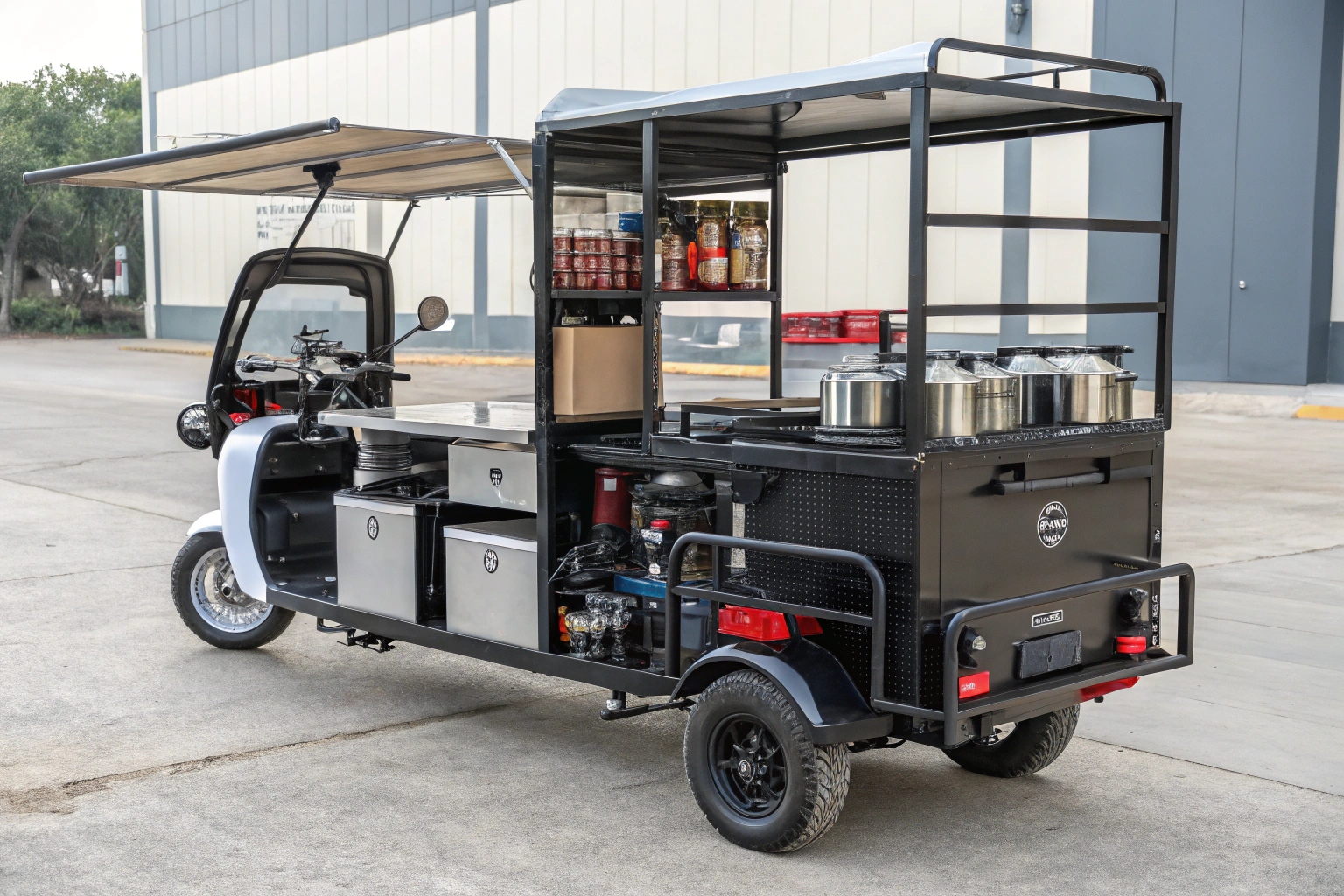
Бұл менің зауыттан, AGL-TRIKE-ден көрген ең жылдам дамып келе жатқан тенденциялардың бірі. Ай сайын біз мобильді тамақ өнімдерін салғысы келетін кәсіпкерлер мен импорттаушылардан көбірек сұраныстар аламыз. Олар мүмкіндікті көреді: төмен шығындар, аз уақыт, тұтынушылар, және қызықты, бизнес-модельді қызықтырады. Бірақ оны құруды дұрыс жоспарлау қажет. Сізге іргетастың өзі - бұл басталудан оңға қарай алу керек. Мұны қалай жасауға болатынын үзейік.
Электрлік велосипед арбаларында қандай маңызды сипаттамаларды таңдау керек?
Сіз бастауға қуаныштысыз, бірақ дұрыс емес сипаттамаларды жинау апарырлы болуы мүмкін. Батареяңызды ортаңғы ауыстырып жатқан немесе эспрессо машинасының салмағының астындағы жақтауды елестетіп көріңіз.
Төрт негізгі сипаттамаға назар аударыңыз: жоғары сыйымдылығы жоғары литий-ион аккумуляторы (48 В немесе одан көп), қуатты мотор (кем дегенде 500 Вт), жүктеме сыйымдылығы (200 кг-нан астам), берік, жақсы салынған жақтау. Бұл сенімді кофе арбасының келісілмейтін негіздері.
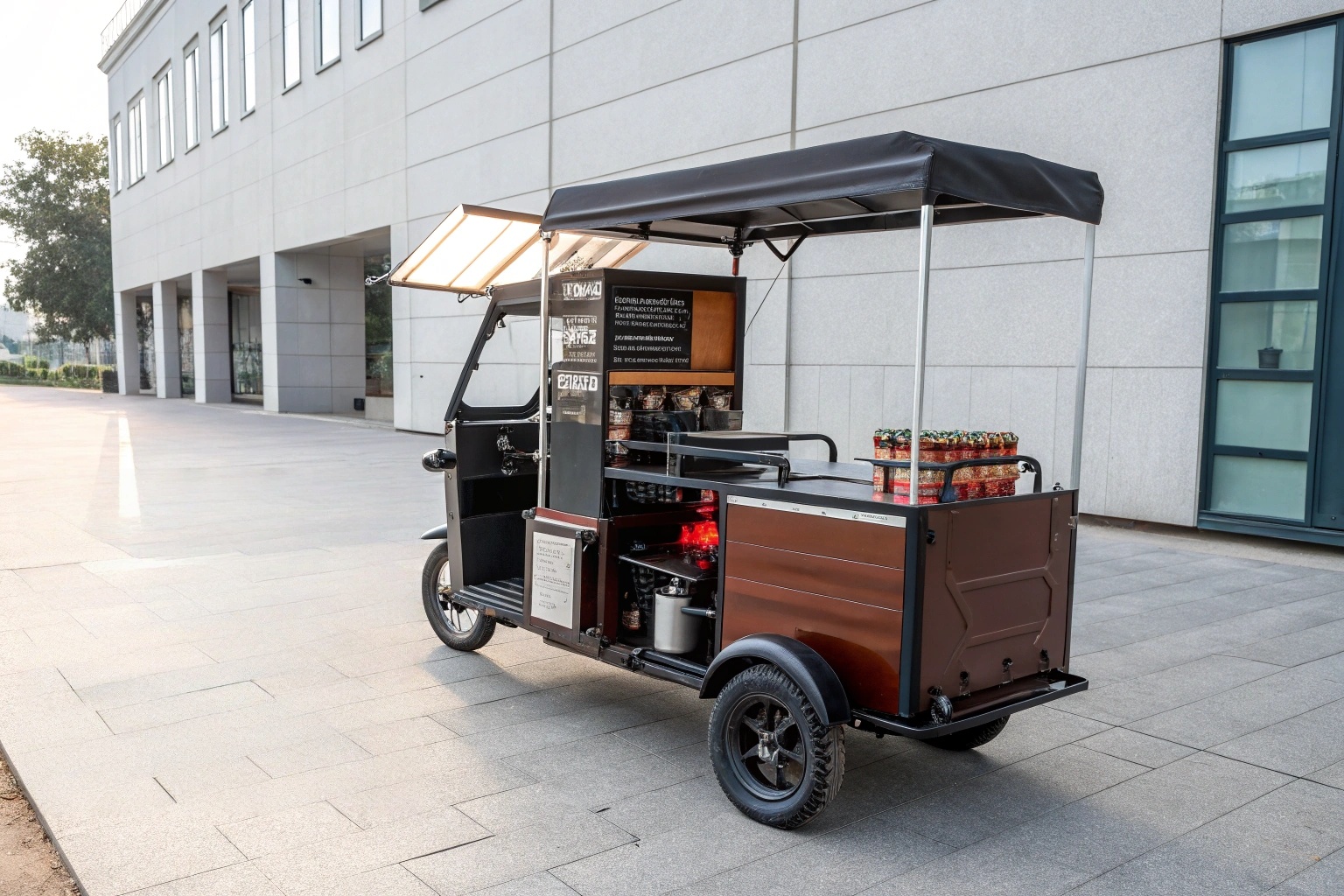
Клиент бізге келгенде Agl-Trike Азық-түлік арбасын салу үшін кофе машинасынан бастама. Біз көлік құралының негізгі инженериясынан бастаймыз. Сіздің мобильді бизнестің жетістігі - бұл трансляцияның тәуліктік сұраныстарын коммерциялық пайдаланудың қабілеттілігіне байланысты. Бұл сипаттамаларды дұрыс алу дегеніміз, көлік құралдарын жөндеуге емес, керемет кофе жасауға назар аудара аласыз.
Міне, сіз өзіңіздің жеткізушіңізбен талқылауыңыз керек маңызды сипаттамаларға қараңыз:
| Техникалық шарғы | Ұсынылған | Неліктен кофе арбасының маңызы зор |
|---|---|---|
| Батарея Түрі | Литий-ион (Lifepo4) | Жеңіл салмақ, ұзағырақ өмір сүру ұзақтығы және қорғасын қышқылымен салыстырғанда тұрақты қуат. Ауыр көлік үшін қажет. |
| Батарея сыйымдылығы | 48V 60AH немесе одан жоғары | Сіз өзіңіздің орналасқан жеріңізге және артта қалуыңызға мүмкіндік беретін практикалық диапазонды қамтамасыз етеді. |
| Мотор | 500 Вт - 1000 Вт | Қатты арбаны жабдықпен және жабдықтармен жылжыту керек, әсіресе қалаңыздағы кішкене төбелерге көтерілуіңіз керек болса. |
| Жүктеме сыйымдылығы | 300 кг + | Эспрессо машинаңыз, ұнтақтағыш, су ыдыстары және жабдықтарыңыз ауыр. Жүктемеден асып кету қауіпті болып табылады және жақтауды зақымдауы мүмкін. |
| Тежегіштер | Гидравликалық диск тежегіші | Барабан тежегіштерімен салыстырғанда жоғары тоқтау қуатын ұсынады, бұл қалалық трафикте ауыр көліктің қауіпсіздігі болып табылады. |
Зауыт ретінде біз осы элементтерді теңшей аламыз. Қауіпсіздік пен ұзақ өмір сүру үшін біз көбінесе теміржол және жаңартылған суспензияны ұсынамыз.
Жеке электр велосипедінің арбасын салу қанша тұрады?
Өзгертпелі арба тым қымбат деп алаңдайсыз ба? Белгісіз шығындар өзіңізді қызықтырады, егер сіз тіпті бастауға бола ма екен деп ойлаймын. Нақты бюджетті бұзайық.
Толық электрлік велосипед тағамдары, әдетте, 6000 доллар мен 15000 доллар аралығында тұрады. Бұған негізгі велосипед, барлық кофе жабдығы және қуат пен суға қажетті теңшелімдер кіреді. Соңғы құны сіз таңдаған компоненттердің сапасына байланысты.
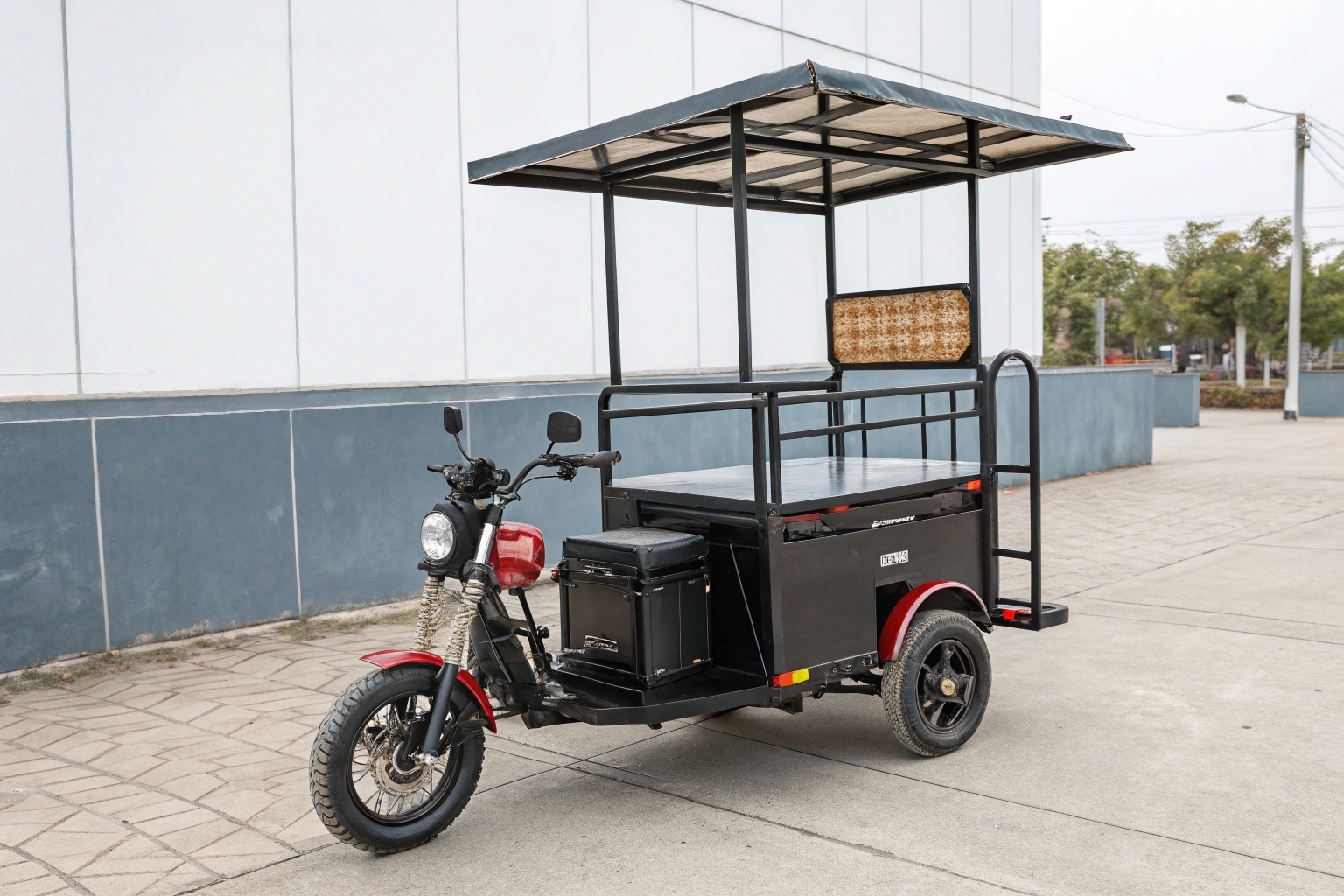
Соңғы баға тегі үлкен болып көрінеді, бірақ оны екі бөлімнен көруге пайдалы: көлік құралдары мен бизнес-жабдықтар. Бұл жерде Agl-Trike сияқты зауытпен тікелей жұмыс жасау импорттаушылар мен кәсіпкерлер үшін үлкен артықшылық бола алады. Суреттер арқылы Базалық электрлік велосипед Тікелей АҚШ-тан, сіз зауыттық бағамен сапалы, теңшелетін көлік аласыз. Бұл сіздің кофе сапаңызды анықтайтын жоғары эспрессо машинасы мен ұнтақтағыштарға арналған бюджеттің көп бөлігін босатады.
Мұнда жобаның әдеттегі бөлінуі:
- 1-бөлім: Электрлік велосипед негізі
- Ауыр шасси & Жақтау: $ 1000 - $ 2000
- Батарея жинағы, мотор & Контроллер: $ 1000 - $ 2000
- 2-бөлім: кофе арбасына арналған
- Эспрессо машинасы & Қалажа: $ 3000 - $ 10,000 +
- Жеке кабинет, қарсы топтар, канопия: $ 1000 - $ 2000
- Күш & Су жүйелері: $ 1000 - $ 3,000
Осы шығындарды бөлу арқылы сіз ақылды шешімдер қабылдай аласыз. Алдымен қатты көлік қорына инвестиция салыңыз, содан кейін қалған бюджетіңізге және бизнес-жоспарға сәйкес келетін кофе жабдығын таңдаңыз.
Мобильді кофе түріне қандай қуат және су жүйелері қажет?
Сізде сіздің тентіңіз бен кофе машинасы бар, бірақ сіз оны қалай қуаттайсыз? Сіз денсаулық кодекстерін тиісті сантехникасыз қалай кездестіресіз? Бұл көптеген таймерлердің дұрыс еместігін толығырақ.
Сізге екі бөлек жүйе қажет: құрылғыларыңызға тәуелсіз электр жүйесі (әдетте инверторы бар терең циклді банктік банк) және ыстық және суық ағынды сулары бар, таза және сұр сулар, және NSF-сертификатталған раковина.
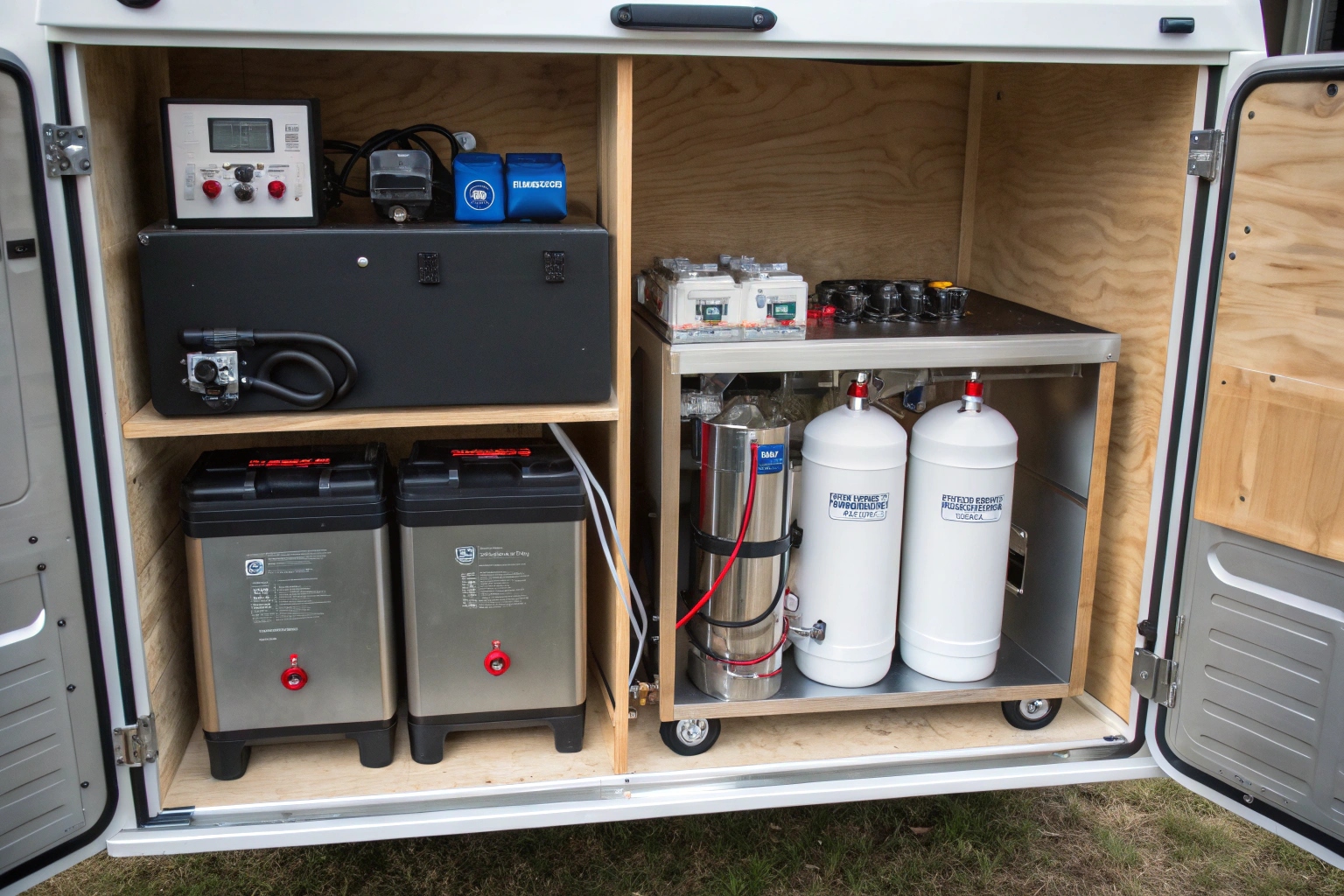
Бұл жерде мобильді бизнес байсалды. Егер сіздің су жүйесі кодқа сәйкес келмесе, денсаулық сақтау инспекторлары сізді бірден тоқтатады. Және сіз эспрессо құрылғысын велосипедпен жүргізу үшін қолданатын батареяны өшіре алмайсыз. AGL-TRIKE-де біз осы сыни жүйелер үшін велосипед шассиін арнайы кеңістікпен бөлеміз. Оларды бастаудан жоспарлау көптеген бас ауруын сақтайды.
Энергетикалық жүйе түсіндірілді
Сіздің кофе жабдықтарыңыз үлкен қуат қажет. Ең жақсы шешім - бұл Trike-дің жетектегі батареясынан тәуелсіз қайталама қуат жүйесі.
- Батарея банкі: Бір немесе екі 12В терең циклы теңіз батареялары.
- Инвертор: DC батарея қуатын айнымалы ток көзіне айналдыру үшін таза синус толқын инверторы (2000w немесе одан көп) ESpresso машинасының қуатына айналдыру үшін.
- Зарядтау: Бұрарея банкін үйде бір түнде зарядтауға немесе күндізгі уақытта қораптың төбесінде күн панельдерімен толықтырылуы мүмкін.
Су жүйесі түсіндірілді
Денсаулық сақтау кафедраларының көпшілігі тұрақты ғимараттың сантехникасын еліктеуді қажет етеді.
- Танктер: Сізге таза су ыдысы (мысалы, 20 литр) және үлкенірек майлы (ағынды сулар) ыдыс (ағынды сулар) қажет (25 литр).
- Жылытқыш: Қолмен жуу үшін ыстық су беру үшін қажет су жылытқышы.
- Сорғы: Су қысымын жасау үшін 12 В су сорғысы.
- Раковиналар: Әдетте, жуғыш заттар мен жууға арналған жуғыш раковинаға арналған үш бөлік раковинасы қажет.
Қандай ROI және eartback кезеңі бизнес арбасынан не күтеді?
Бұл барлық жоба жақсы қаржылық инвестиция ма? Бұл ең маңызды сұрақ. Егер күш-жігер іс жүзінде пайда әкелетінін білуіңіз керек. Нөмірлерді қарастырайық.
Төменгі үстеме және қатты сұранысы бар, сіз 1,5-тен 3 жасқа дейін инвестицияларыңыздың толық төлемін күтуге болады. Негізгі драйверлер - нөлдік жалдау және өте төмен жанармай шығындары, олар әр кесе сатылған әр кеседен жоғары пайда маржасына мүмкіндік береді.
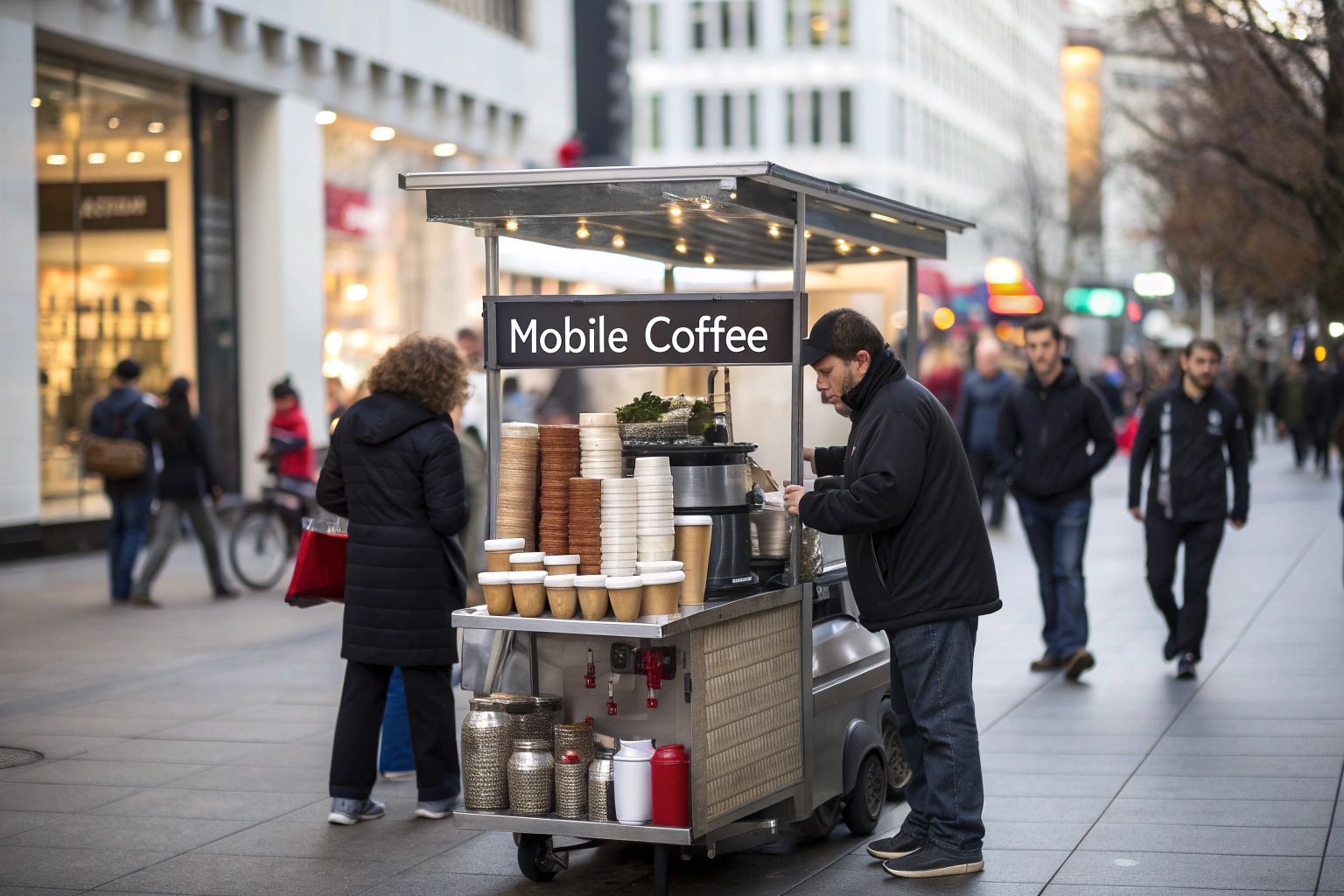
Электрлік тағам арбасына арналған инвестициялардың (ROI) кірістілігі дәстүрлі кірпіштен және ерітінді кафесімен салыстырғанда өте тартымды. Сіз жаңа тамақ кәсіптерінің біреуін жойып, ай сайынғы жалға бересіз. Сіздің негізгі пайдалану шығындарыңыз - сіздің кофе дәндері және батареяларды зарядтау үшін қажет электр энергиясының аз мөлшері. Біз клиенттерге осы бизнесті іске қосуға көмектестік, олардың жетістігі қарапайым формулаға түседі.
Кәсіптің ең негізгі күнін модельдейік:
| Зат | Табыс / Құны | ЕСталдар |
|---|---|---|
| Шыныаяқтар сатылды | 80 кесе | Лайықты орын үшін консервативті бағалау. |
| Бір тостыға баға | $ 4.00 | Орташа баға. |
| Жалпы кіріс | $ 320 | |
| Тауардың құны | - 80 доллар | Кофе, сүт, шыныаяқтар және т.б. (25%). |
| Энергия құны | - $ 2.00 | Түнде батареяларды қайта зарядтау құны. |
| Күнделікті таза пайда | $ 238 |
Айына 20 күн жұмыс істейді, бұл 4700 доллардан асады. Алғашқы инвестициямен, айтыңыз, 20 000 доллар, сіз бір жылдан аз уақыт ішінде бүкіл инвестицияңызды төлей аласыз. Бұл сіз дұрыс негізнен бастаған кезде осы бизнес-модельдің жаппай әлеуетін көрсетеді.
Қорытынды
Электрлік кофе тәрізді арбаны салу - ақылды, тиімді кәсіпорын. Дұрыс сипаттамаларға назар аудару арқылы жүйелеріңізді жоспарлау және зауыттық серіктеспен жұмыс жасай отырып, сіз тез арада төлейтін мобильді бизнес жасай аласыз.

